

Unkover your competitors’ Marketing Secrets
Say goodbye to wasting hours on competitor analysis by equipping your team with an AI-driven, always-on competitive intelligence platform.


Say goodbye to wasting hours on competitor analysis by equipping your team with an AI-driven, always-on competitive intelligence platform.

Stay Ahead with AI-DRIVEN Competitive Intelligence
Unkover is your AI-driven Competitive Intelligence team delivering critical updates about your competitors the moment they happen:
Track your competitors website changes
Why spend all day stalking the competition when you don’t have to?
With Unkover, you’ll know instantly when your competitors tweak their messaging or shake up their pricing. No more endless scrolling through their sites or second-guessing your strategies.
Let us do the heavy lifting for you, ensuring you’re always in the loop by notifying you the moment a critical change happens on your competitor’s pages.
Sit back, relax, and keep winning—Unkover makes sure you’re not just in the game, you’re always a step ahead.


Read your competitors emails
Companies love updating their customers and prospects about relevant news, product updates, and special offers.
That juicy info from your competitors? It’s yours too. Unkover will automatically capture all their emails and bring them right to your doorstep—accessible to your entire team, anytime.
[COMING SOON: Our fine-tuned AI will sift through these emails, extract key information and send them over to the best team within your org. Less noise, more signal!]
We hear you! Unkover’s goal is not to flood you with tons of data points that no one in your team will ever read. We gather competitive intelligence from thousands of data sources and use AI to highlight actionable information to the right team in your company.
Say goodbye to noise. We’re 100% signal.
ROADMAP
We’re excited to get Unkover in your hands as soon as possible and keep building the best competitive intelligence tool with your precious feedback. The roadmap for the next few months is already exciting, so take a look!
While we build and deliver, here’s our promise to you: as an early tester and customer, you’ll lock in an exclusive bargain price we’ll never offer again in the future.

Spy on your competitors’ full marketing strategy: social, ads, content marketing, email flows, and more.

Track competitive Win/Loss analysis and build battle cards. Get alerted at every pricing change.

Get immediate alerts when competitors announce new features or major releases. Identify strengths and weaknesses from online reviews.

Get the competitive intelligence you need where you need it: Slack, eMail, MS Teams, Salesforce, Hubspot, Pipedrive and more.
slack integration
Unkover’s Slack integration lets you keep your whole team up to speed with your competitors’ updates.

Join now to lock in an exclusive 50% lifetime discount
For startups and small teams, it’s the essential toolkit you need to keep an eye on a select few competitors.

Up to 5 competitors

50 pages monitored

10 email workflows

3-day data refresh
$39
/per month
$ 79
50% discount
Billed annually
For growing businesses, it allows you to monitor more competitors, pages, and email workflows.

Up to 10 competitors

100 pages monitored

20 email workflows

1-day data refresh
$79
/per month
$ 159
50% discount
Billed annually
For large companies, it is tailored to meet the needs of multiple teams needing granular insights.

Custom number of competitors

Custom number of pages monitored

Custom number of email workflows

Hourly data refresh
Custom price
Billed annually

Just how in the world did CustomerGauge raise its loyal customer base by 29%?
By “closing the loop” with its best and unhappy customers.
In this guide, you’ll learn how it prevents customer churn alongside other startups. Steal an idea or two from these customer retention strategies to increase your revenue growth rate.
Customer retention is a metric that measures a company’s ability to retain customers over a period of time.
Customer retention plays a vital role in recurring revenue.
In fact, it takes only a 5% increase in retention to raise a company revenue by up to 95%.
Keeping existing customers is just as important as acquiring new ones. Besides improving customer lifetime value (CLTV), it boosts customer loyalty, word of mouth, and cross- and upsell opportunities as well.
Retention marketing ensures customers use your product to its full potential. Here’s a powerful way to make customers feel appreciated and come back for more in the long road ahead.
78% of consumers will stay with a brand if it rewards them.
Loyalty programs that align with customer values can even go as far as impacting advocacy. (think of offering Custom Canvas Prints as rewards to loyal, engaged customers.) In other words, not only do you increase recurring revenue, but you also tap into a new market of customers simultaneously.
But creating customer loyalty programs without compromising customer connection is… well, tricky.
And yet, DataforSEO cracked the code.
This leading SEO provider offers a money-saving benefits package to clients who engaged their services for over two years. The company keeps the program out of sight on the website to add an exclusivity touch.
“Sometimes companies heavily advertise their benefits packages, but in reality, they don’t provide any real benefits. It’s a marketing trick. They say there’s a discount, but it’s so small. No customer will see it as a sign of appreciation.”
Nick Chernets, CEO of DataforSEO, on why loyalty programs fail
Here’s why DataforSEO’s loyalty program works:
You can easily identify your most loyal customers with a contact scoring tool like Breadcrumbs.
Here’s how it works:
Breadcrumbs will send all scoring information to your main data source and notify you when a customer fits your predefined criteria.
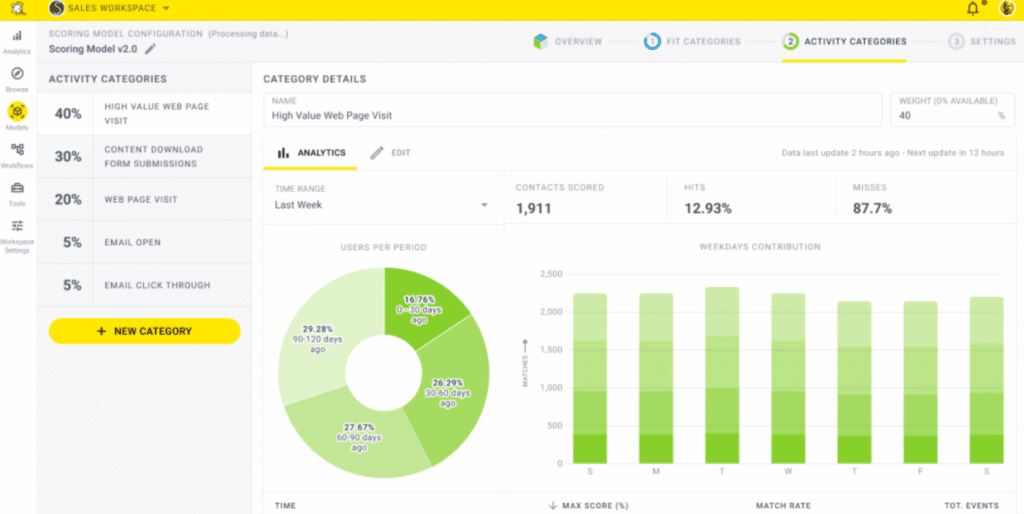
That way, you can identify your most loyal users accurately.
Grab your free plan on Breadcrumbs today to kick-start your customer retention programs.

Salesforce is one of the most high-powered sales and CRM-focused SaaS tools on the market…

Every good sales team needs a great customer relationship management (CRM) tool backing them up. …

Over the past decade, we’re sure that you’ve noticed that your marketing tech stack options…
The customer journey never ends, not even for your biggest detractors. Here’s an excellent strategy to get all customers on board.
Every customer is valuable, but not every customer holds the same value. CustomerGauge focuses on retaining its largest accounts. Every quarter, the B2B VoC software company requests for feedback in an NPS survey sent throughout strategic points in the customer lifecycle stage.
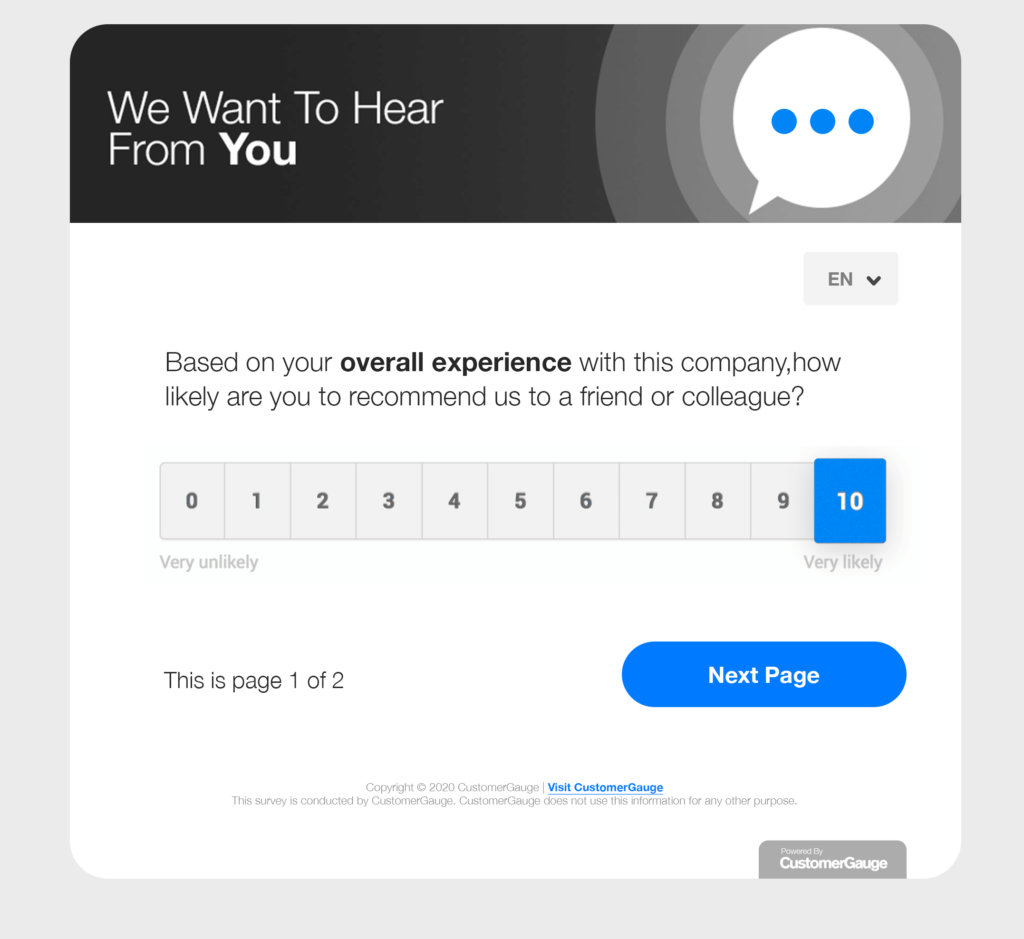
Despite collecting feedback actively, multiple accounts still churned.
It was then the team realized they needed to measure other metrics to better understand customer satisfaction and loyalty.
“We had to change our strategy,” shares Ian Luck, the VP of global marketing at CustomerGauge. “That’s when we started looking at customer and account behavioral signals outside of NPS like support tickets, quarterly business review attendance, and product usage.”
Note: You can also use a tool like Breadcrumbs to identify at-risk customers. Define what makes a churning user in the pre-defined criteria (e.g., didn’t login the past week) and set the scoring model live. Breadcrumbs will send all scoring information back to your CRM, alerting you whenever a user shows signs of declined usage.
Alongside NPS, these metrics paint a clearer picture of the account retention landscape.
But the actual key to accelerating customer retention rates, according to Luck, lies in implementing a “vigorous closed-loop process” for customer promoters and detractors.
CustomerGauge integrated a bunch of behavioral signals into its own dashboard to track activity at the individual account and customer level.
Through this approach, they could spot an ‘absence of signal’—a sign of inactivity that correlates with their high churn rate and low retention rate.

The team would then automate feedback collection and reporting in real-time. Eventually, they would relay this information to the customer support team, who will then follow up with the customers “as soon and humanly as possible.”
“In these conversations, you’re not only showing customers you care enough to follow up on their feedback. You’re also creating a human connection between the company and the customer—and often that’s the difference that can change the tide.”
Ian Luck, VP of global marketing at CustomerGauge, on checking in with promoters and detractors
This human-centric approach raised the startup’s customer base by 29%.
CustomerGauge’s speed to close the loop with its customers had a positive impact on retention.
“They’re usually surprised to hear from us so quickly in both happy and unhappy situations,” divulges Luck. “Either way, it’s a great first impression to show customers we care enough to follow up on the feedback they just gave us.”
Three-quarters of customers prefer live agent support when navigating complex interactions like technical assistance, expensive purchases, and returns and cancellations.
Given that these customer service inquiries involve nuances that chatbots can’t handle, this figure comes as no surprise.

Unfortunately, Brosix learned this the hard way.
After implementing a chatbot on its website, the business messaging software company saw a drop in its customer engagement.
The company discovered that the onslaught of templated responses frustrated customers and caused them to abandon the site before even having a chance to speak to the live support agent.
The team eventually shifted from customer support automation to one-on-one assistance. They also hired more agents to accommodate the growing support tickets and brought in specialists to teach them how to efficiently communicate with customers.
In the end, Brosix experienced a slight increase in retention.
85% of SMEs and large companies believe that online customer feedback has been beneficial to their business.
These companies invest in processes and resources to gather valuable information, enjoying benefits such as better employee morale, brighter business reputation, and a steady stream of referrals.
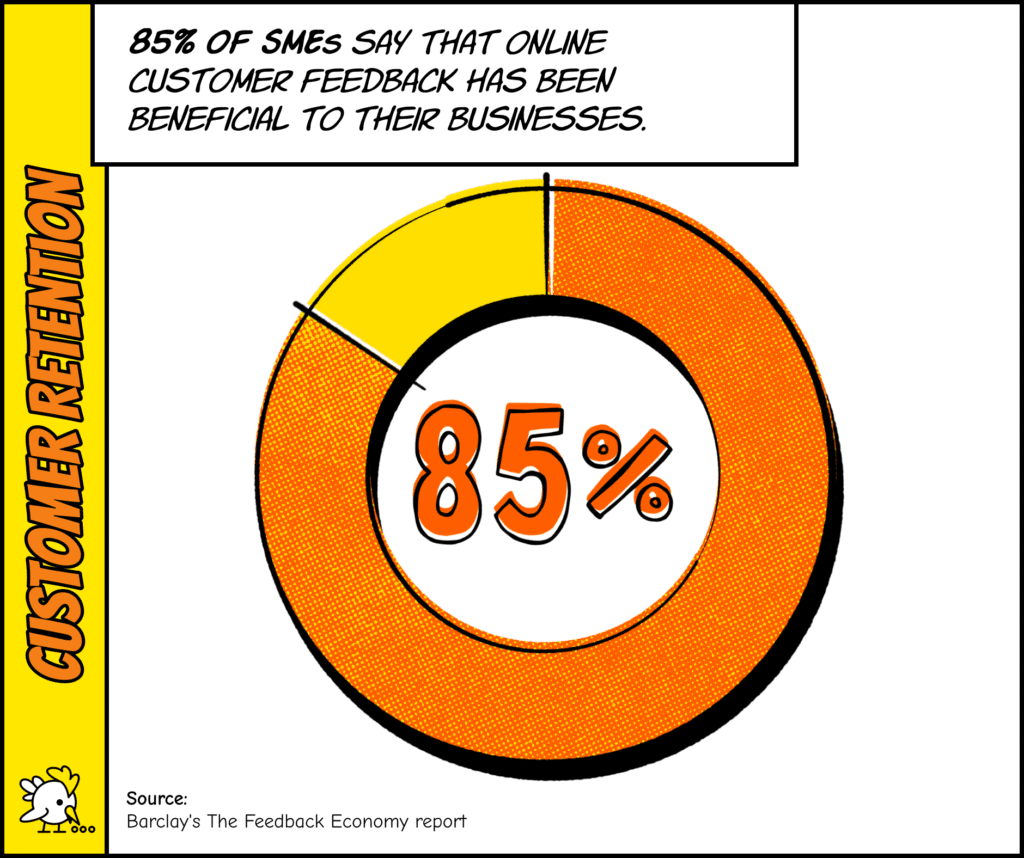
Perhaps that’s why it’s tempting to request feedback from customers during the resolution stage. After all, the support agents just resolved a problem and the quality of service is fresh off their minds. If not now, when?
The problem with requesting feedback too early in the process, explains Jeff Cooper, manager of Messagely, is that it might confuse the customers in unintended ways.
“It’s the equivalent of a journalist interviewing a crash survivor as soon as they were rescued,” says Cooper.
“They’ve encountered a problem and went to great lengths to fix it. Thankfully, the agent solved it without a hitch. However, the team continues to pressurize the customer to provide input on the experience.”
Jeff Cooper, manager of Messagely, illustrating how it looks like from the customer’s end when brands introduce the feedback process too soon
Avoid surveys in service tickets. Instead, initiate the customer feedback loop in a separate email after a day or two.
Customers want the choice to pick up a conversation (or task) where they left off.
Omnichannel strategies drive an 80% higher rate of incremental store visits, which shows that businesses that understand this ever-changing customer behavior and offer more options to meet this need will win in the long run.
When PlanM8 noticed more brands adopting an omnichannel approach to their marketing, it followed suit in its customer support.
The yachting maintenance software company initially had an inconsistent net promoter score (NPS). Since supporting customers on their favorite social channels, it improved its NPS, churn rate, and recurring revenue.
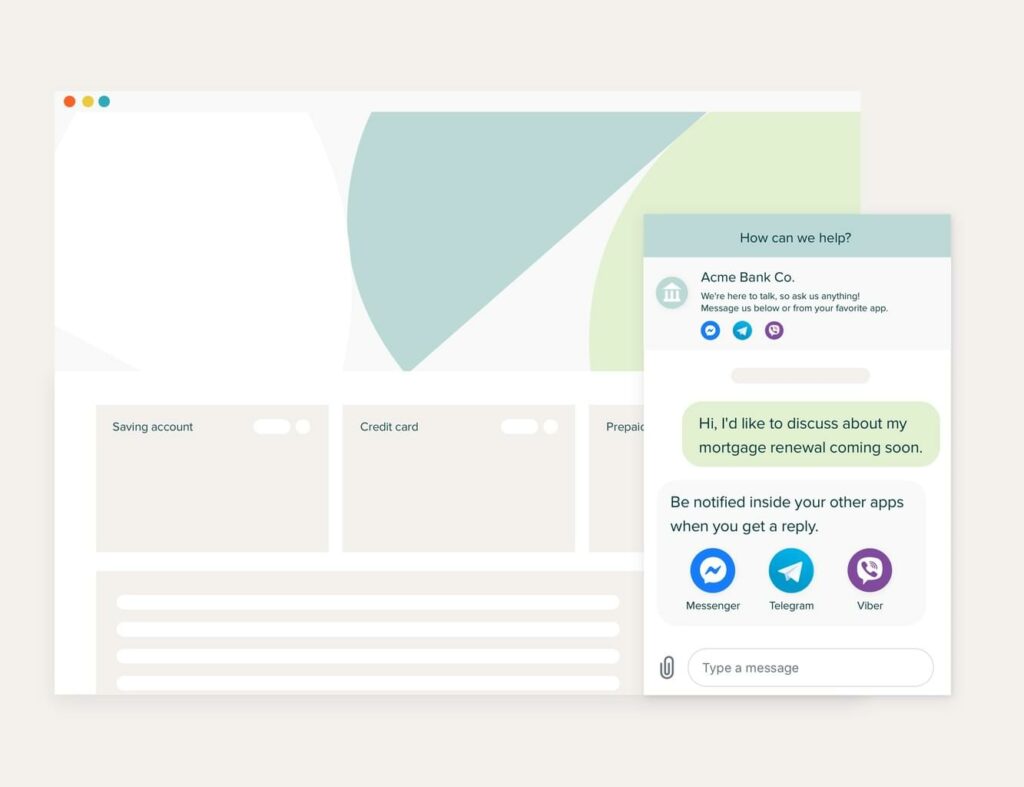
Omnichannel strategies accelerate revenue.
Consider PlanM8’s three-step omnichannel framework if you want to replicate its strategy:
The COVID-19 pandemic will be remembered as one of the most trying times in history.
Businesses across the globe shifted to WFH, pivoted to new ventures to stay afloat, and offered deals and premium support to retain customers, among others.
Ashore was one of the startups that offered deep discounts to help customers affected by the pandemic.
After COVID-19 broke loose, the online proofing SaaS startup saw many of its customers leaving. “Customers saw their pipelines dry up suddenly,” laments Cody Miles, founder of the online proofing app. “They began looking for ways to cut costs.”
Note this email from an Ashore client. It details the challenges brought on by the coronavirus and how they had no option but to cancel their account.
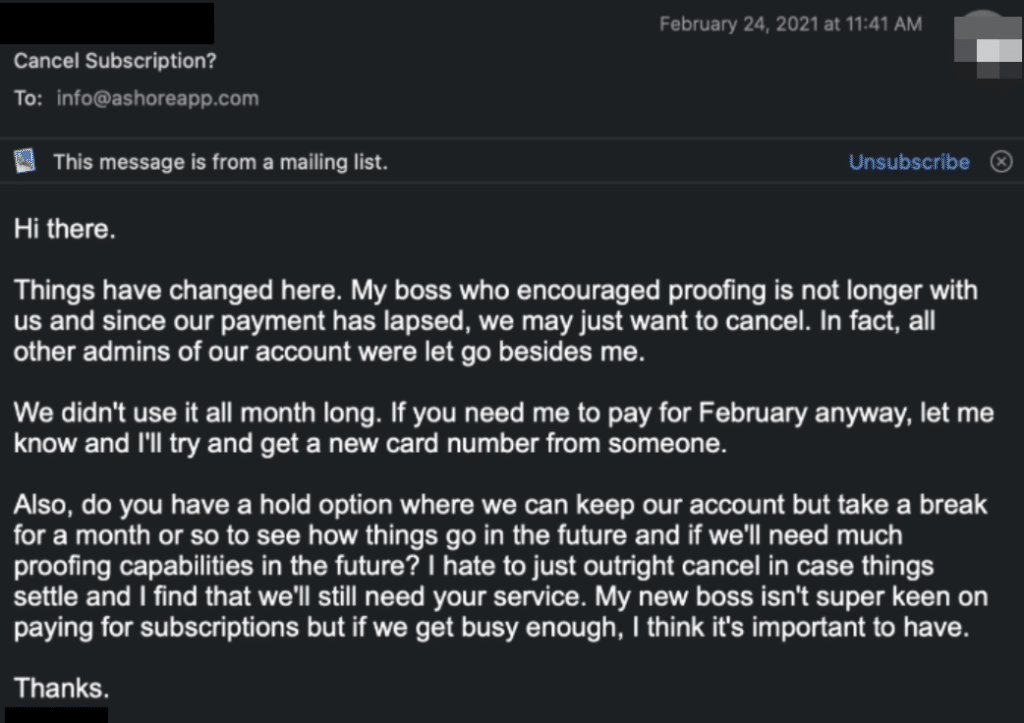
To stop churn from happening, the customer support employees at Ashore educated customers how the solution would benefit them during a business crisis and offered discounts to sweeten the pot.
Now, observe how the customer success manager goes the extra mile: by offering a 50% discount for the next six months.
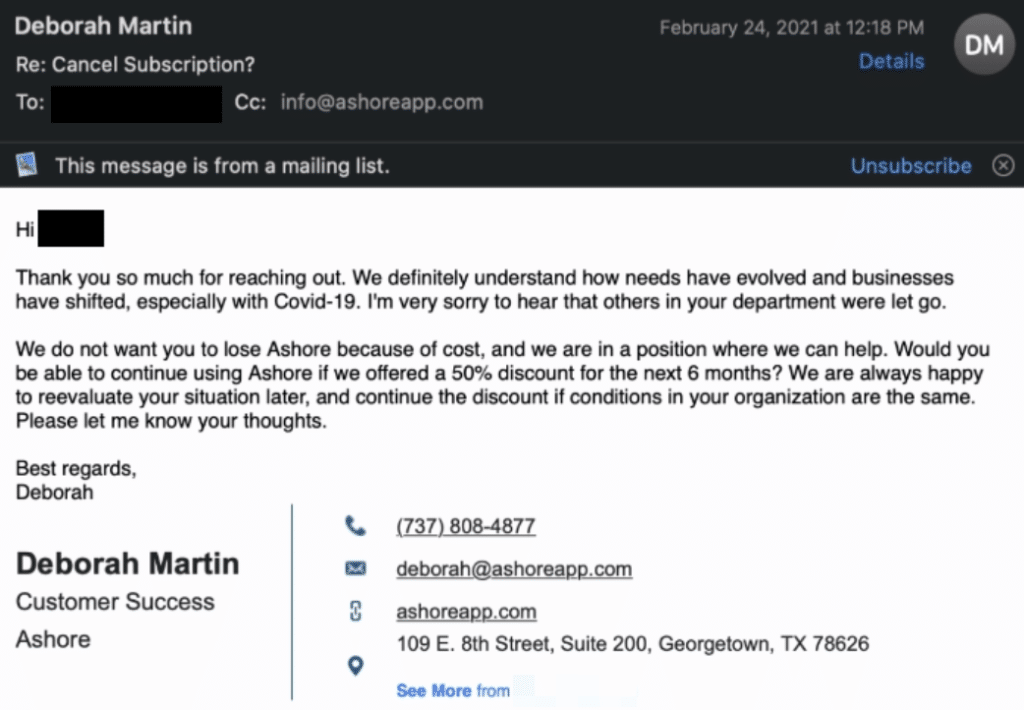
That’s not all.
Ashore also assigned a customer success manager for each new user and customized a recurring and in-depth training session for its most popular features. Since March 2020, this series of “frequent, light touches on the customer accounts” doubled the startup’s CLTV.
“Sometimes it’s a matter of additional training or supporting new users on the account. Other times, it’s receiving feedback on how we can improve to receive full adoption. In every case, it’s an effort of making sure the customer knows they are supported and loved.”
Cody Miles, founder of Ashore, on fostering customer relationship to improve retention
You can duplicate Ashore’s strategy using our contact scoring platform. Here’s how it works:
Breadcrumbs will send all in-app data back to your main data source, notifying you of users who meet your predefined criteria.
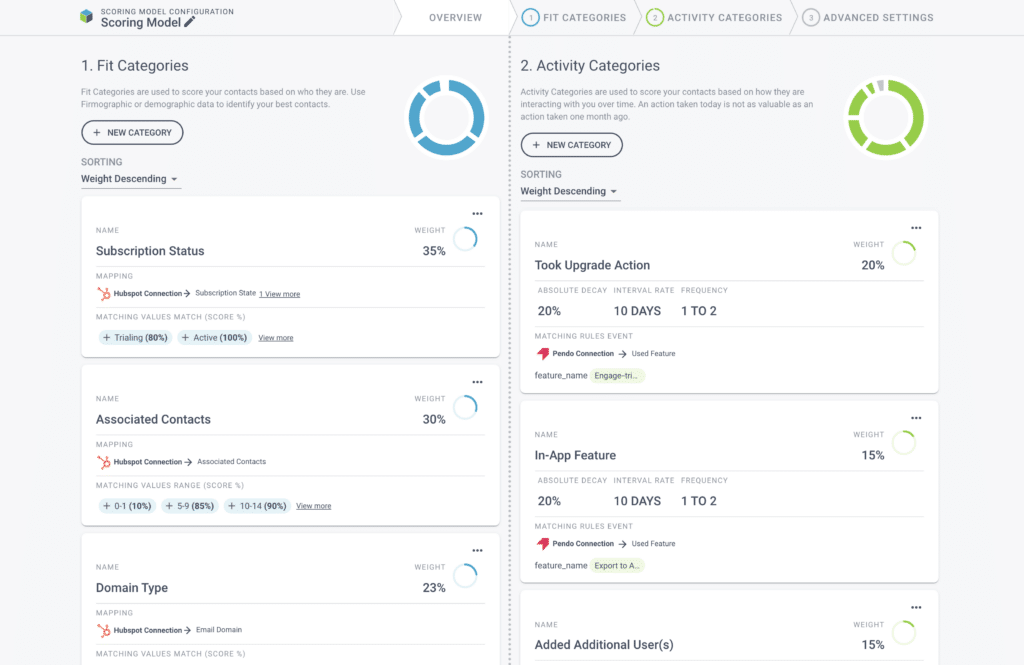
Now that you’ve identified these active users and satisfied customers, invite them to join the training sessions.
Remember, no customer is 100% familiar with a product’s full functionality. A comprehensive webinar training teaches them how to make the most of it.
Start your free plan on Breadcrumbs to identify your most active users today.
Pro tip: Make check-ins a habit. Gather everyone in the customer retention team and determine if your users require assistance. The Ashore team asks themselves the following questions before deciding to set up the training sessions: - How often are users logging in? - How many proofs are they sending? - Is the approval rating on their proofs increasing? - Are the number of revisions per proof decreasing? - Is the time-to-feedback decreasing? If there's a downward trend in any of these areas, the customer success team will reach out and offer assistance.
Wondering how to encourage users to return to your product for more engagement? Consider these strategies to refine the product experience and increase future purchases.
Customer expectations have increased over the years.
With 63% of survey respondents sharing that they like it when manufacturers offer new products, companies today need to surprise and delight customers with new improvements if they want to stay ahead of the competition.
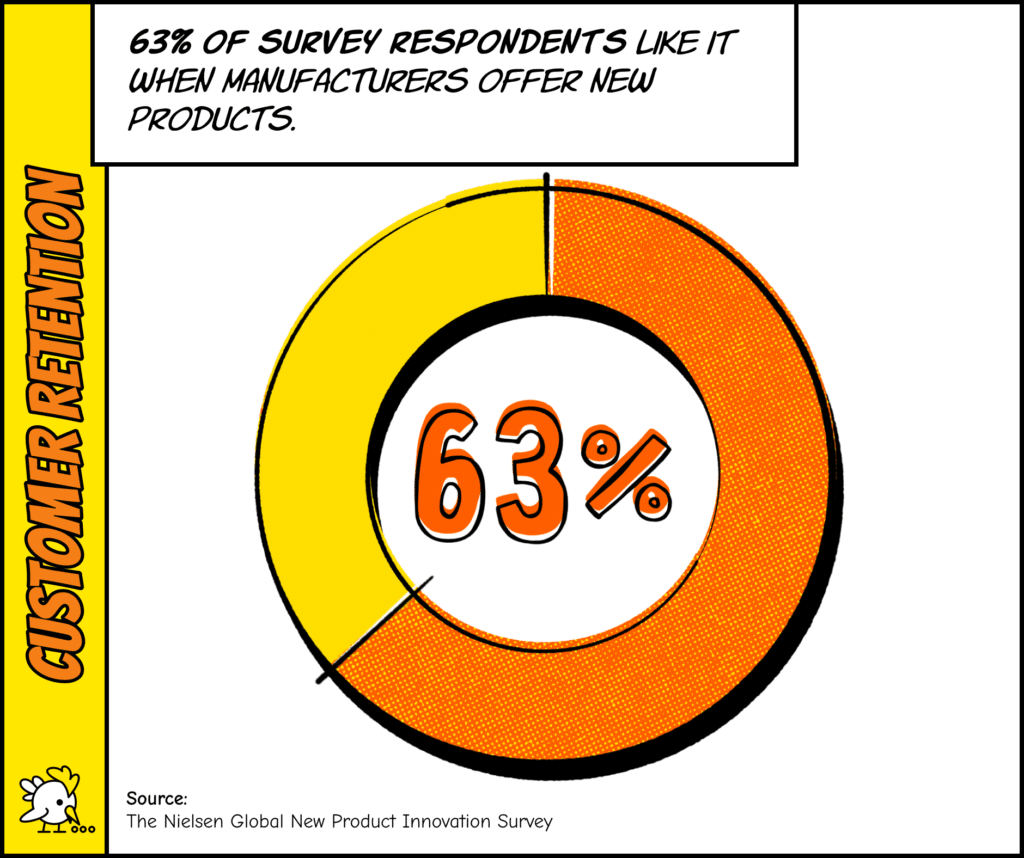
DocuPlayer is no exception.
The legal SaaS startup focuses heavily on product development to keep customers loyal.
In the past, new customers would cancel their accounts within one month of signing up. Stranger still, an early adopter customer, who had championed the product to other users, stopped using it.
It turns out there was a bug in the product.
“We learned the hard way that we need to test more for bugs and offer an easy way for members to let us know about it.”
Tiffany Christianson, CEO of DocuPlayer
The team promptly fixed it and offered the customer a free six-month membership. As expected, the customer reactivated the account.
“Retention takes care of itself when you maintain a useful tool,” explains Christianson.
“Conduct more rigorous testing when you add a new feature. Assume there are bugs and go on a mission to find them, as opposed to quickly testing and assuming there are none.”
The onboarding process needs to be intuitive.
It guides first-time customers to the aha moment and boost activation and adoption. Any misstep in this process risks churn.
One way to improve the product experience is to use triggers.
Whether it’s action-focused or time-based, triggers improve user experience and teach customers how to use your SaaS product.
Intellifluence automates its user onboarding with a variety of logic-based events. These triggers gently nudge them to take specific actions that lead them to the aha moment.
“When there’s an alignment between user onboarding and user success, retention improves. The smoother every step is, the higher likelihood of retaining them. Users that complete campaigns and take steps to accomplish their KPIs will have better success and stay with us longer.”
Joe Sinkwitz, CEO of Intellifluence
Sinkwitz walks us through a trigger on Intellifluence:
[Start] User creates a campaign [Event] User doesn't add other users after 3 days (Sinkwitz says the likelihood of these customers churning increases dramatically at this point) [Trigger] Receives email or push notification to guide them on the appropriate steps

Analyze your in-app data to identify points of friction. In Intellifluence’s case, it developed triggers for hundreds of friction points in the system to help users accomplish their campaigns as quickly as possible.

Long gone are the days of selling to C-suite executives. Or is it? Today, the…
You’re leaving money on the table if you prioritize customer acquisition over retention.
These customer retention strategies play a massive role in revenue acceleration, and, more often than not, are the missing puzzle pieces in your SaaS marketing strategy.
Grab your free plan on Breadcrumbs to improve your retention efforts today.
Customer retention is a post-purchase metric that tracks a company’s ability to retain customers over a time period.
[(Total number of customers at the end of a period – Number of new customers added within the period) / Number of existing customers at the start of the period] x 100%
There’s really no best customer retention strategy.
However, there are various strategies proven to work time and again.
Examples include responding to customer complaints in live chat, offering current customers a rewards program, acting on feedback (in customer surveys, customer reviews, customer comments in social posts), strategically using social proof, etc.